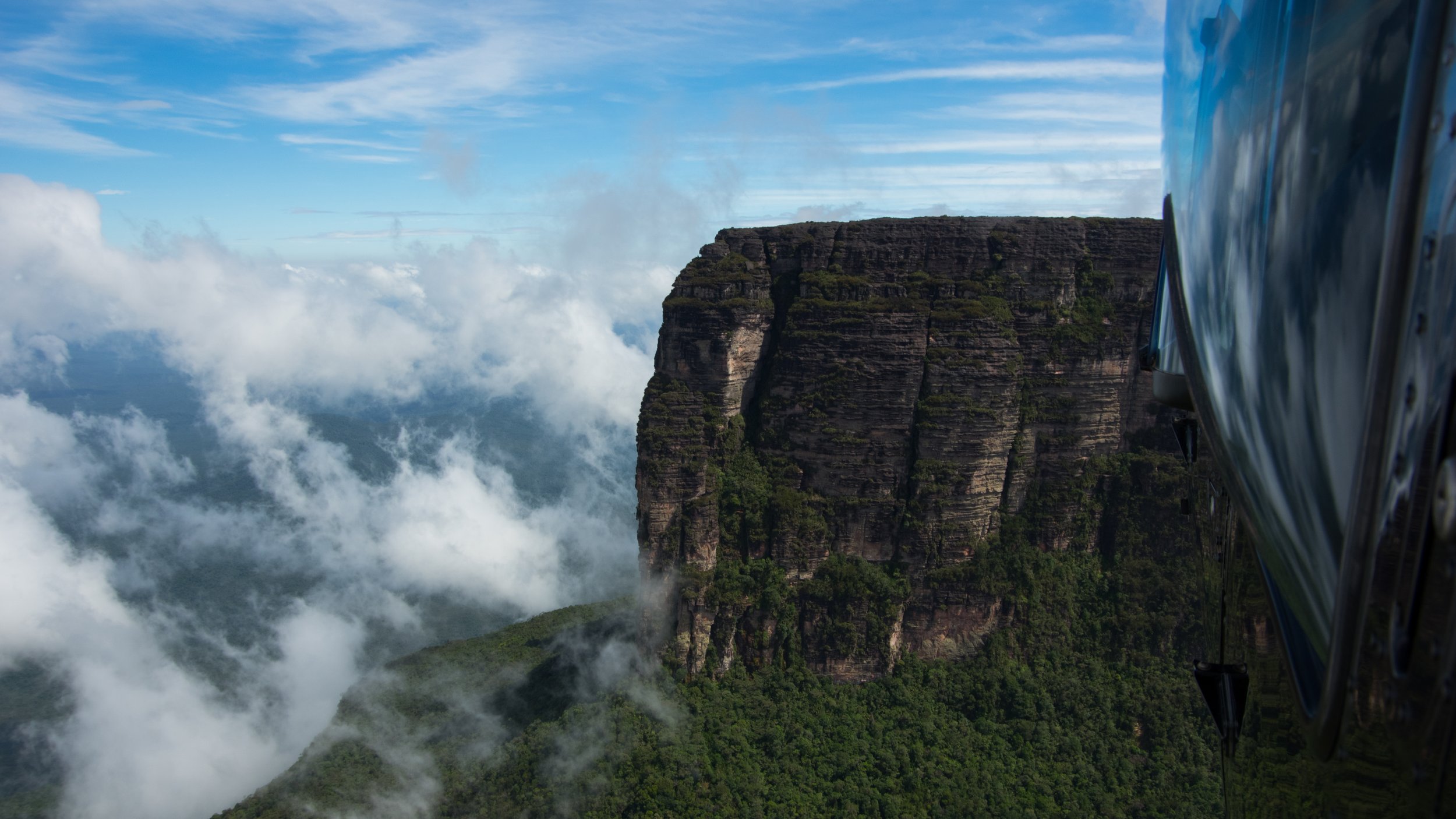
Ptari Tepui
Ptari Tepui rises vertically from the jungle below. The sheer cliffs make this tepui only accessible by helicopter and very few people have ever explored this area. At only 0.48 square miles, the seemingly small area is loaded with biological diversity with many species of carnivorous plants. I visited this alien world in 2017, camping for 2 nights on this uninhabitable mountain.
Ascending into the Clouds
After many hours huffing diesel fumes in the back of an old pickup (not pictured), crossing rivers, and leaving the grid, we arrived at Mantöpai. The helicopter will fly over Sororopán Tepui (in background) to Ptari Tepui (not visible).
The first glimpse of Ptari from outside the helicopter window. The flight was only 10 minutes over inaccessible jungle and savannah.
Arrival.
Signaling to the helicopter in the distance from the otherworldly landscape atop the tepui.
Tents have to be tied down to the few available sheet rocks and small tufts of grass to withstand the daily wind and rains.
Heliamphora Pitcher Plants
The tepuis of Venezuela are home to many species of carnivorous plants, none more famous than the South American Pitcher Plant, Heliamphora. These plants have evolved to trap and digest insects to supplement the deplete soils of the rainy tepui environment. Ptari Tepui is home to two endemic species of Heliamphora found nowhere else on earth.
The Hybrid Swarm
Heliamphora purpurascens is only found on Ptari Tepui and has a large, helmet-shaped nectar spoon on top of the pitcher.
Heliamphora purpurascens growing out of a shallow marsh surround by dense, low-growing vegetation.
Heliamphora sarracenioides is unique in its lack of a nectar spoon, instead having a pointed opening at the top of the pitcher.
A beautiful clump of H. sarracenioides.
H. sarracenioides in flower - this species was found primarily in these patches of vegetation on top of the bare sandstone plateau.
Heliamphora sarracenioides x purpurascens hybrid showing intermediate traits. These hybrids generally have a hood-like nectar spoon with a domed bump. The exact shape is extremely variable.
Heliamphora sarracenioides (front) next to H. sarracenioides x purpurascens hybrids (left and right). H. sarracenioides makes up maybe 10% of the population with the majority being all different forms of hybrids.
Heliamphora purpurascens and H. purpurascens dominant hybrids in situ.
Island in the Clouds
Looking down from a tepui is a surreal feeling. The biodiversity of the plateau is entirely different than the forests below, comprised of unique plants and animals found nowhere else on earth. Besides pitcher plants, the tepuis are home to other carnivorous plants like sundews (Drosera), bladderworts (Utricularia), and corkscrew plants (Genlisea).
A tiny frog hides inside a pitcher. Many species live in a symbiotic relationship with pitcher plants. The pitcher can provide safety for the frog or its eggs, while the plant can feast on the animal’s dropping for nutrients.
A small frog peeking over a rock. I found several different types of frogs, though I don’t know which species.
Small little bugger.
A lot of interest in a tiny frog (barely visible, center). Very little is known about the animal species on Ptari. I found this frog under a rock to the great interest of the Venezuelan biologists.
The terrain is extremely rugged with hidden crevasses that can drop off hundreds of feet without warning.
Utricularia quelchii is a carnivorous bladderwort that grows within the dense vegetation and has spectacularly colored flowers.
These flowers had a fluorescent, reflective pink-orange color that is impossible to capture on camera.
Bladderworts (Utricularia) are carnivorous plants with subterranean or aquatic traps. These small bladders use suction to inhale small invertebrates into the chamber where they are digested. This species, Utricularia humboldtii has some of the largest traps in the genus and can be found growing in the wells of giant bromeliad, Brocchinia hectioides.
























